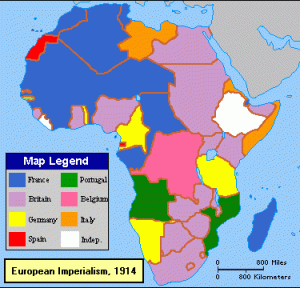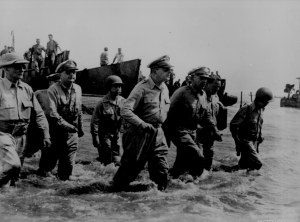The British Empire
April 2, 2009

Click on the following places to learn about British impact on the colonies’ geography, culture, industry and trade.
North America
April 1, 2009

The British first established colonies in continental North America and the islands of the Caribbean such as Jamaica and Barbados. The Caribbean colonies soon adopted the system of sugar plantations and to ensure that the increasing profits remained in English hands, English ships could only ply their trade in English colonies. Production of cane sugar became the economic and political strength of the Jamaican British Company. Sugar plantations dominated Jamaican life and led to massive importation of slaves from Africa to provide labor. Eventually, extensive trade began among other Caribbean islands, not only in sugar but in other manufactured goods. The American colonies were less successful than those of the Caribbean, but still had large areas of good agricultural land. The British Empire in the West Indies was based on slavery. Before the abolition of the slave trade, Britain was responsible for the transportation of 3.5 million African slaves to the Americas, which is a third of all slaves transported across the Atlantic. So, forts were established on the coast of West Africa to make this trade easier. The slave trade was extremely profitable and became a major contribution to the economy. After the American Revolution, many British Loyalists settled in Canada. Hudson’s Bay Company gains control on the fur trade, and forts and trading posts were established by the Company. Today, most Canadians are of European descent (mostly British and French origins) and even their culture is influenced by British and American culture. Most of the country uses common law which was derived from the British parliamentary tradition.

Africa
April 1, 2009
 Africa is the world’s second-largest continent. It covers 6% of the earth’s total surface area and 20.4% of the total land area. It is surrounded by the Mediterranean Sea to the north, the Suez Canal and the Red Sea to the northeast, the Indian Ocean to the southeast, and the Atlantic Ocean to the west.
Africa is the world’s second-largest continent. It covers 6% of the earth’s total surface area and 20.4% of the total land area. It is surrounded by the Mediterranean Sea to the north, the Suez Canal and the Red Sea to the northeast, the Indian Ocean to the southeast, and the Atlantic Ocean to the west.
Africa has the line of equator and is enriched with numerous climate areas. It is the only continent to stretch from the northern temperate to southern temperate zones. Moreover Africa is God-gifted with different fertile green lands, fresh water is available for irrigation and these lands can easily fulfill their agriculture demands and also export agricultural goods. It has beautiful islands, and furthermore, it has the world’s largest desert – the Sahara desert. In the southern parts of Africa gold and diamonds are found in abundance.
British longed to get more and more colonies and they always tried to find ways to control them easily. The British wanted to take over Africa mostly to serve their own interests. With all the geographical and economic importance Africa has, British could not resist making efforts to take over Africa. They could maintain and control India as Africa had waterways and a lot of land, this would make it easy for them to control their other colonies. They could not afford to lose possessions of India because it had become the economic center of their empire; moreover, they also focused some of their resources on limiting the power of France and on maintaining their reputation.
When they came to take over Africa they found the Dutch and some other imperialist powers controlling Africa. Most of the African population was Muslim and several different Muslim rulers ruled small territories of Africa as well. Factors like a strong and advanced military, and too many ethnic groups which spoke different languages and had different cultures, weakened Africa and imperialists took over gradually.

Middle East
April 1, 2009
 The British also had colonies in the Middle East, such as in Bahrain, Iraq, Jordan, Kuwait, Oman, Palestine, Qatar, UAE, and Yemen. These countries were claimed mainly because of the discovery of oil, and because of their access to water, such as the Mediterranean Sea and Persian Gulf. Some of these colonies also had ports which became an important base for the Royal Navy, especially after the opening of the Suez Canal which opened an important link to the route to India. Apart from oil, natural gas, and petroleum, these countries also have fish, shrimps, pearls, phosphates, sulfur, potash, shale oil, copper, asbestos, marble, limestone, chromium, gypsum, rock salt, coal, gold, lead, nickel, and fertile soil.
The British also had colonies in the Middle East, such as in Bahrain, Iraq, Jordan, Kuwait, Oman, Palestine, Qatar, UAE, and Yemen. These countries were claimed mainly because of the discovery of oil, and because of their access to water, such as the Mediterranean Sea and Persian Gulf. Some of these colonies also had ports which became an important base for the Royal Navy, especially after the opening of the Suez Canal which opened an important link to the route to India. Apart from oil, natural gas, and petroleum, these countries also have fish, shrimps, pearls, phosphates, sulfur, potash, shale oil, copper, asbestos, marble, limestone, chromium, gypsum, rock salt, coal, gold, lead, nickel, and fertile soil.
India
April 1, 2009
Southeast Asia
April 1, 2009
 British claimed Singapore on January 29, 1819 and set up trading ports that served as stops for their ships that traveled the India-China sea routes. Singapore became the major trading port in Southeast Asia and had three crucial advantages over other colonial port cities. Its strategic location allowed most ships trading between China, India, and Europe to pass Singapore. Second, Singapore was a free port, so the Dutch in Latvia and Spanish in Manila put tariffs and charges on imports. Third, Singapore was linked with the British commercial and industrial empire, and by the nineteenth century Britain became the dominant colonial power. The opening of the Suez Canal and demand for tin and rubber also made Singapore one of the world’s busiest ports, where products form Southeast Asia are collected, packaged, and re-exported. Investment finance came through Singapore, where tin and rubber were exported, and it was the warehousing and distribution center where imports were collected needed for growing European population. Singapore also did little manufacturing, such as food and clothes, and they did some food processing.
British claimed Singapore on January 29, 1819 and set up trading ports that served as stops for their ships that traveled the India-China sea routes. Singapore became the major trading port in Southeast Asia and had three crucial advantages over other colonial port cities. Its strategic location allowed most ships trading between China, India, and Europe to pass Singapore. Second, Singapore was a free port, so the Dutch in Latvia and Spanish in Manila put tariffs and charges on imports. Third, Singapore was linked with the British commercial and industrial empire, and by the nineteenth century Britain became the dominant colonial power. The opening of the Suez Canal and demand for tin and rubber also made Singapore one of the world’s busiest ports, where products form Southeast Asia are collected, packaged, and re-exported. Investment finance came through Singapore, where tin and rubber were exported, and it was the warehousing and distribution center where imports were collected needed for growing European population. Singapore also did little manufacturing, such as food and clothes, and they did some food processing.
British also claimed colonies in the Malay Peninsula and in Burma (Myanmar). Malaysia also had large deposits of tin and rubber, which the economy was based on, and prospered due to mining and plantations; the world’s first rubber plantations were in Malaysia. Over time, Malaysia became the world’s largest major producer or tin, rubber, and palm oil. These three commodities, among other raw materials, firmly set Malaysia’s economy. Apart from agricultural products, Malaysia also has natural resources in forestry and minerals. In terms of agriculture, Malaysia’s top exports are natural rubber and palm oil, along with cocoa, pepper, pineapple, and tobacco. In terms of forestry resources, logging and the expansion of timber production are substantial contributions to the economy. Minerals of some importance include copper, bauxite, iron-ore, coal, granite, and small quantities of gold. Malaysia has a diverse range of flora and fauna. International trade and manufacturing plays a large role in its economy. The British encouraged the Chinese to immigrate to Malaysia in need for workers; culture clashes between the two are still seen today.
The British also claimed colonies in Bangladesh, Hong Kong, Pakistan, and Sri Lanka. Bangladesh has natural gas, arable land, which is suitable for farming, timber, and coal. Pakistan also has extensive natural gas, some petroleum, coal, iron-ore, copper, salt, and limestone. The Indus River also flows throughout the country which allows access to the Arabian Sea. Hong Kong has an outstanding deepwater harbor, suitable for trade stations and ports. Textile and manufacturing industries grew with the help of population growth, and the economy grew and was driven by exports. Sri Lanka has limestone, graphite, mineral sands, gems, phosphates, and clay. Brunei has petroleum, natural gas, and timber.

Australia and New Zealand
April 1, 2009
 Relations between the Thirteen Colonies in America and Britain became increasingly strained because of the British Parliaments attempts to govern and tax American colonists with their consent – “Taxation without representation” – and Britain eventually lost these colonies. After the loss of the Thirteen Colonies, the British government turned to Australia, their newly discovered land. The Australian colonies became profitable exporters of wool and gold. Australia’s natural resources also include bauxite, iron, manganese, opals, sapphires, and other precious stones. During the same voyage when Australia was discovered and claimed, both islands of New Zealand were also claimed for the British crown. The islands of New Zealand are surrounded by the Pacific Ocean and Tasman Sea; European settlement increased with many trading stations established.
Relations between the Thirteen Colonies in America and Britain became increasingly strained because of the British Parliaments attempts to govern and tax American colonists with their consent – “Taxation without representation” – and Britain eventually lost these colonies. After the loss of the Thirteen Colonies, the British government turned to Australia, their newly discovered land. The Australian colonies became profitable exporters of wool and gold. Australia’s natural resources also include bauxite, iron, manganese, opals, sapphires, and other precious stones. During the same voyage when Australia was discovered and claimed, both islands of New Zealand were also claimed for the British crown. The islands of New Zealand are surrounded by the Pacific Ocean and Tasman Sea; European settlement increased with many trading stations established.
Bibliography
April 1, 2009
(Information)
Modern World History textbook. Patterns of Interaction. McDougal Littell
http://www.aseanfocus.com/publications/history_singapore.html
http://www.localhistories.org/malaysia.html
http://en.wikipedia.org/wiki/Malaysia#Geography
http://www.angelfire.com/mac/egmatthews/worldinfo/asia/colonisation.html
http://knowledgerush.com/kr/encyclopedia/British_Empire/
http://knowledgerush.com/kr/encyclopedia/Canada/
http://en.wikipedia.org/wiki/British_Empire
http://en.wikipedia.org/wiki/Austrlia
http://www.jamaica-travel-vacation.com/jamaican-history.html
http://www.cusd.chico.k12.ca.us/~bsilva/projects/imperialism/index.html
http://www.cusd.chico.k12.ca.us/~bsilva/projects/imperialism/baldwin.htm
http://www.usd.edu/honors/HWB/1999/1999f/imperialism%20in%20africa.htm
http://library.thinkquest.org/17282/history/economicexpansion.html
http://library.thinkquest.org/17282/history/divisionamongindians.html
http://www.blurtit.com/q946460.html
http://india_resource.tripod.com/eastindia.html
http://india_resource.tripod.com/Europetrade.html
http://india_resource.tripod.com/eastindia.html
http://www.infoplease.com/ipa/A0107629.html
http://www.indiavideo.org/text/india/#R
http://www.mapsofindia.com/maps/india/india.html
http://www.maharashtraweb.com/India/Indiaindex.htm
(Pictures)
http://regentsprep.org/Regents/global/themes/imperialism/images/africa.gif
http://www.internationalist.org/maumaurebels.jpg
http://www.nationalarchives.gov.uk/cabinetpapers/themes/west-indies.htm
http://www.antislavery.org/breakingthesilence/slave_routes/slave_routes_jamaica.shtml
http://www.eurekacouncil.com.au/5-Australia-History/History-Pages/1770-james_cook.htm
http://ww2.norfolkacademy.org/fac_staff/~rezelman/IRH/index.htm
http://www.users.bigpond.com/battleforaustralia/battaust/Austinvasion.html
http://www.finfacts.com/irelandbusinessnews/publish/article_10002841.shtml
Hello world!
April 1, 2009
Welcome to WordPress.com. This is your first post. Edit or delete it and start blogging!